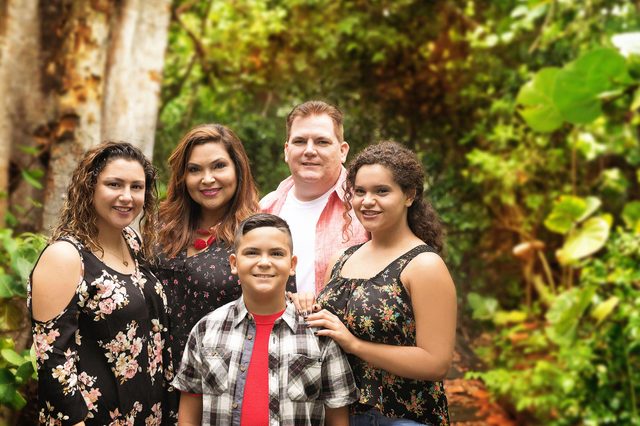
“Maci had asked not to be adopted”
Maci Kean came through the The Dave Thomas Foundation for Adoption, and with over 100,000 children in the U.S. foster care system, organizations like the Foundation can play a crucial role in placing kids, especially considering 20,000 children in foster care will never be adopted. Older children and those with special needs often face difficulty finding adoptive homes. A recent survey taken by The Foundation revealed that 80 percent of Americans considering adoption would look at kids foster care.
Maci lost her father when she was two, and her mother at 11, both to addiction. Growing up, her life was anything but stable. Continuous drug use and domestic violence marred her life for years. A high fever took her hearing as a toddler, leaving her deaf. School was an additional source of stress for Maci, where she was constantly bullied. She missed days of school at a time, as her mother was rarely awake to put her on the bus—much less feed her breakfast or get her dressed. Placed in the temporary custody of her aunt while her mother served a jail sentence for drug-related charges, Maci’s life began to unravel. Life with her aunt lacked the love she had known from her mother, and she quickly began acting out as a result. After Maci’s mother completed her sentence, she went into a half-way home where she died of a drug overdose. Suddenly, Maci’s temporary placement with her aunt became long term, and the grief over the loss of her mother created a downward spiral—and compensating negative behaviors—that her aunt was not willing to work through.
When Maci was 15, her aunt released her into the foster system, a move that only increased her feelings of isolation. She was placed in a strict group home that provided the basics for life: food, shelter, and medical care. According to her adoptive mother Gigi, what it didn’t have was more important. “Even though she had safety and medical care, she didn’t have love. If these children don’t learn to function in a family with love, they will be forever impacted,” she told Reader’s Digest. Maci’s adoptive father, Chris, adds, “It was a top-notch group home, but group homes are made to address the needs of all the children—not as individuals. At an emotional level, they cannot meet the bonding needs of each child.” There are many things adoptive parents wish others knew, because the process of adoption is so complex.
A junior in high school, Maci was quickly nearing what is called “aging out” of the system; when children turn 18, they are no longer considered to be adoptable by the state. Maci had already given up hope of being adopted, and redid her paperwork to reflect her dashed hope: Maci changed her permanency plan to include only foster care, not adoption.
Maci didn’t know it at the time, but her future mother was already in her life on a daily basis. Gigi Kean worked at Maci’s high school office. “We all knew her story,” she says. “I never saw her as a pity case—I always saw her as this fiery, bright, and intelligent girl. I was ignorant about foster children, I never even considered that she might want parents, or to be adopted. I admired her strength, and talked to her whenever I could.”
It was only when Maci showed Gigi her Forever Family video—she made the video with the help of the Dave Thomas Foundation to assist her in being placed—that Gigi understood the depth of Maci’s yearning for a real family. “She told me, “I just need to be realistic, no one wants to adopt me. Who would want me?,” Gigi recalls. It was then that the wheels in Gigi’s mind began to turn, and adopting Maci was all she could think about. After speaking to her husband Chris, the plan to adopt Maci was officially set in motion, and it was only a matter of time before they became a family of five. The Keans’ two biological children, Carolyn and Christopher, were completely on board with gaining a new sister.
Initially, Maci was hesitant to trust that her dream of having a family would come true, but on June 8th, only six weeks before turning 18, she officially took the last name Kean, and was adopted. Maci’s new mother is quick to point out that adopting a child at any age is important. ” A child’s need for love, acceptance, and the knowledge they will never be given up is the same at 7 or 17,” she explains. “Age or special needs should never be a deterrent, people just need to understand that these children come with trauma, and love is the most healing thing you can offer,” she says. Adoption is very common–even these famous celebrities were adopted.
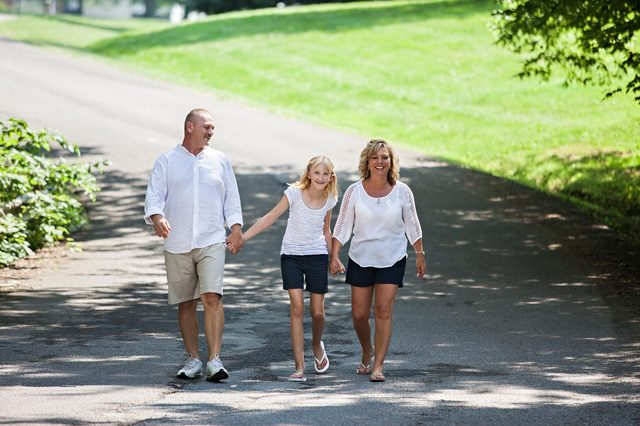
“We didn’t put any stipulations on the type of child we would take”
Dwain and Lorie Hargis were nearing a stage in life that most parents either dread or welcome with open arms: they were almost empty nesters. With their two biological children grown with lives of their own, Dwain and Lorie were unsure of their next step. Lorie recalls, “I turned to God, as I often did, and just said ‘Whatever you want me to do with my life, I’ll do it’. That very day my husband brought home a phone number for a foster agency.” Over the years, the Hargis’ fostered almost two dozen children of all ages and abilities. “We didn’t really put any stipulations on what “type” of child we would take, and were very open to anything they called us for,” Lorie explains.
When they got the call for Olivia, they never expected her to be anything more than another child they fostered. Olivia had been placed in foster care when she was four, and experienced being moved to five different homes within seven years. During that time she quickly learned the ropes of foster care, and how to get a new placement when she wanted one. Lorie explains, “Olivia learned how to play the system. If she didn’t like the home, she would do things that would make most people ask themselves ‘What were we thinking?’ She knew when she was wanted, and when she wasn’t.”
The Hargis’ open their homes and hearts to almost every child they are contacted about, and they offer to adopt each child that is adoptable. “Once we met Olivia, it seemed very natural for her to be with us, Lorie recalls. ” After all, she even looked like our biological daughter with blonde hair and blue eyes. It absolutely broke our hearts to hear how she had lived her young life up to that point. She was a free spirit and full of life and excitement. Not too many things affected her since she had already learned to block things out,” she continues.
Their two biological children echoed Dwain and Lorie’s thoughts on fostering children and adoption. Her daughter, a cosmetologist, will often do Olivia’s hair and other big sister activities. Her son is in the Air Force, but spends as much quality time as he can when he’s home with the children his parents have fostered and adopted. Lorie says, “They both have asked on different occasions, ‘Why didn’t you do this when we were growing up?’ They are now 26 and 24 years old and treat each one of the fosters or adoptive kids as their own siblings.”
Although Olivia had experienced hardships in her young life, she eventually learned that she could trust Dwain and Lorie. Lorie recalls,”She was very used to people giving up on her, and not wanting her. She tried to test the waters with us. When she figured out we weren’t going to give up, she finally learned to trust and love us as her parents.”
Dwain and Lorie say that their dreams for Olivia are big, and no matter what, she will have their support. “Olivia knows she is well-supported with whatever she decides to do with her life. Now, there is a reason to believe that she will change the world. We hope that she takes what she has known with us and continues to spread the kindness and love that has been shown to her into her adult life,” Lori explains.
She adds,” We have always told our adoptive children, “When it’s time for you to go into this big world by yourself, you will be confident in knowing you are well equipped to spread your wings and fly.”
Learn what people get wrong about adoption, from the perspective of an older adopted woman.
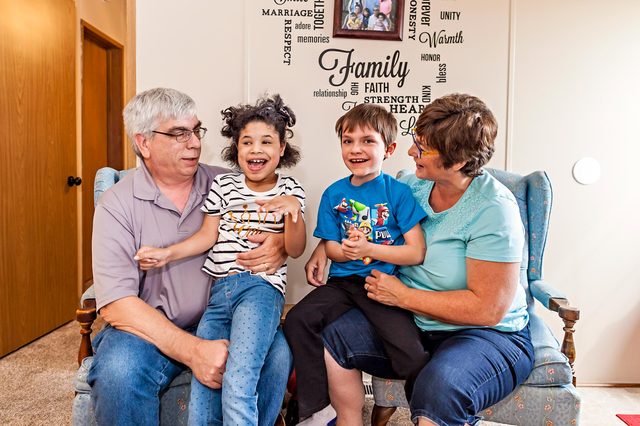
“Doug just needed a good start”
Pam and Greg Caldwell had raised three children already when Pam felt like she had room in her heart and life to raise more. With her husband working late nights, and her 17-year-old son busy with his own friends, Pam found herself with plenty of free time that she wasn’t accustomed to. She explains, “I’ve only raised kids during my adult life—it’s all I was used to. I told Greg that we should consider fostering children.” Although they originally had no intentions of adopting, they received a five-week old baby in 2014 that became their adopted son after three years. “That’s our Dominic,” Pam tells Reader’s Digest. “Life hasn’t been boring since,” she adds.
After fostering for two years, Pam became friends with a social worker for Wendy’s Wonderful Kids, and jokingly asked her what children she had available. That’s when the social worker handed Pam an information sheet highlighting Douglas’ information, and Pam knew she needed to tell Greg about the little boy. Douglas had been in foster care since he was three, and when he was placed in the foster system was the victim of severe neglect. Pam explains, “Doug came to us not walking, talking, and eating baby food. He was scared of the dark and sleeping in a crib.” Doug’s improvement since being with the Caldwells has been drastic and rapid. She continues, “He now eats regular food, he will try to say what he wants, and he is walking, which was our biggest challenge. He sleeps in a twin bed and we slowly transitioned him to only needing a small night-light to sleep with. He has done so much in a short time. We can’t wait to see where he goes with his life. He just needed a good start.”
The Caldwells had two adopted sons, in addition to their three grown children, and yet Pam knew that she wanted to add another child to their family, a girl. After contacting the social worker, Pam says she was frightened by the child she was presented with: Nevaeh, a five-year old in the foster system since she was two, who had been so brutally abused as a baby she was now confined to a wheelchair with severe disabilities. Pam recalls, “She scared us—she had a lot of problems. I talked Greg in to going to visit her and that’s all it took for her to become a daddy’s girl. After our meeting and learning everything we needed to know to care for her, we brought her home in March of 2015.”
Pam and Greg don’t think their stories of adoption are anything remarkable, they simply met a need that was placed in their path. Pam explains, “We knew they needed us, and we looked past their disabilities. Really, we found out that we needed them so much more than they needed us. They have shown us what we really are capable of handling.”
Nevaeh has blossomed in the Caldwell family, and she is now making leaps and gains once thought impossible. “Nevaeh would repeat what you said to her when we first got her, and never noticed people coming and going. Today, you can have a conversation with her. She can do just about anything on her iPad, and she makes some decisions on her own. She is smart, and learning to read. She amazes me every day with something new. She knows all of our family members and talks all the time.”
Pam cautions others who fear adopting a child with special needs from focusing on the wrong thing. She advises, “Look past the words ‘special needs.’ Those are just words. See the child.”
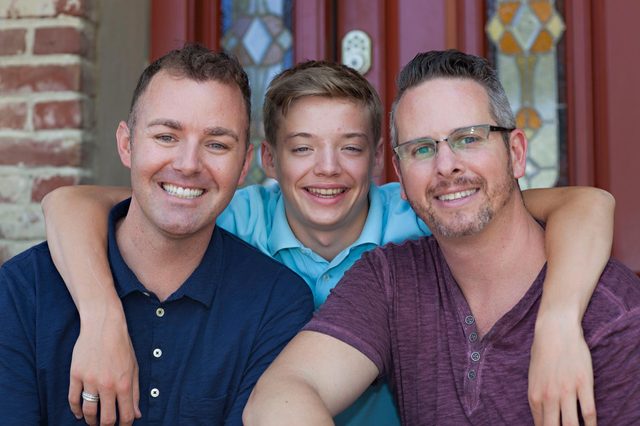
“Tyler told us, ‘I think this is a good fit'”
In 2009, Marc and Robb were living a life that many dream of, filled with successful professional careers and frequent travel, but they both agreed that something was still missing. Having a child had always been important to the couple, and it felt as though the time to pursue an addition to their family had arrived. Robb tells Reader’s Digest, “We’ve always known someone was missing at the table, and we’ve always wanted a family. We’ve always wanted someone to teach to tie their shoes, someone to visit colleges with.”
Once the decision had been made to begin the adoption process, Marc and Rob completed a “Family Available” sheet, a document that uses photographs and personal information to introduce a child to prospective parents. “It’s an opportunity to give a child the chance to feel like they get to choose you, instead of you choosing them,” Robb explains. Originally looking for a child from infant age to seven, the couple scanned several thick binders full of profiles of waiting children. Robb recalls, “There were these huge binders—just full of children, all waiting for families.” When a social worker showed them the profile of a nine-year-old boy named Tyler, they decided to schedule a meeting with him even though he was older than their original preference. “We had previously talked to friends about it, and we just came to the conclusion that it would be crazy to say we would take him if he were six or seven, but not nine,” Robb says.
Marc and Robb met Tyler on a cold January day at an aquarium. “I had this excited and nervous feeling,” Robb says. “We wanted to love this child, and we wanted him to love us, too,” he adds. The initial meeting proved to be exactly what Tyler and the couple had hoped for—they all felt as though they were meant to be a family. On the way back to his foster mother’s home, Tyler softly asked from the backseat as Robb drove, “So when are you going to adopt me?” This was a question Robb hadn’t been prepared for, but a perfect way to confirm what they had all been feeling. “I pulled over and told him that we needed to make sure that it was a good fit for him, and for us—and he responded with ‘I think it’s a good fit.’ That’s when I just knew.”
Tyler was placed in foster care due to parental neglect at the age of six, and had experienced three separate foster homes in the three years prior to meeting Marc and Robb. “We think of each situation he’s been through as a tool to help him navigate his adult life. His past does not define him,” explains Marc. On December 10, 2009, Marc and Robb officially became the parents of Tyler, an event that felt a lifetime in the making.” He’s been a part of our family his entire life, it just took him a little while to get to us,” Robb says.
Today, Tyler is a 17-year-old senior in high school who works summers at the local zoo and plays the piano. He’s touring colleges with his parents and excited for the future—a future that now looks brighter than ever. “Everyone that knows Tyler loves him. He’s such a wonderful human being. We would do what we did a million times over to get Tyler,” Robb says. Marc and Robb are motivated to share their story of adopting Tyler to help others understand that adopting an older child can be wonderful, and full of some of the same things you would expect to experience with a younger child. “These kids are not in foster care because they had great parents,” Robb says. “You’ll have the firsts with older kids that you would have had with younger ones—we taught Tyler to ride his bike, brush his teeth—all of those things,” he adds. Robb and Marc were once told by a family friend to not forget about older children as an option for their family. “He said, remember that they come back home during college—they’ll come back to you for the rest of their lives,” Robb recalls. “You don’t parent a child only until they’re 18. You adopt a child for a lifetime,” Marc says. Adopting from foster care is free in many states, but the cost of adoption in other scenarios is often higher than you might expect.
Marc and Robb are both passionate about the joy that adoption, and specifically adoption of an older child, has brought to their lives. “I feel as bonded to Tyler just as much as if he were my biological child,” Marc says. “I would sacrifice myself for him in an instant, without a second thought,” he adds. The couple want others to know that parenting an adopted child is no different than parenting a biological one. “Every child has issues—biological or not—but that’s just part of being a parent,” Marc explains. “Every child is entitled to a childhood. I just want people to know that they shouldn’t make assumptions. Children in the foster system deserve a chance to be considered,” Robb adds.
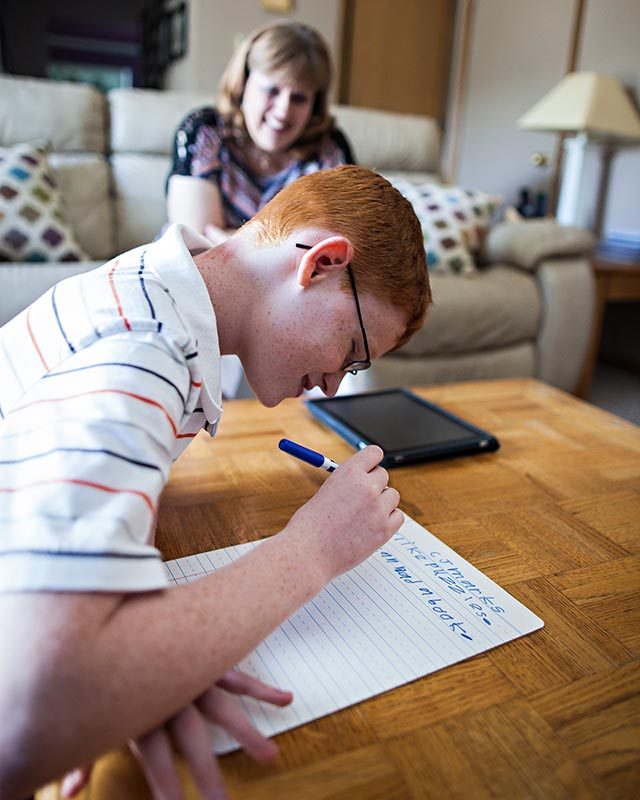
“A recruiter told me he was unadoptable. I hate that word.”
Dee Marks was no stranger to adoption when she began the search for a daughter to adopt. Having already adopted her daughter, Marrena, Dee hoped to find another to add to their family. She began the search for a teenager, and was open to one with special needs. When a recruiter told her about a little boy that was considered “unadoptable,” Dee asked to hear more about him. “I still vividly remember that phone call. I listened to the recruiter but then mentioned that I was really looking for a girl with a cognitive disability, and wasn’t trained on how to raise a boy with autism,” Dee told Reader’s Digest. She adds, “I hated the word “unadoptable,” and told her to tell me more about this little boy. She told me that he was eight years old and had red hair. That’s what got me. I love red hair.” The little boy with red hair was considered to be difficult to find a home for due to his frequent and lengthy tantrums, and several other undesirable behaviors for a child his age. Dee explains, ” He had severe behaviors like throwing tantrums for long periods of time, throwing up to escape doing any schoolwork, screaming, and running away. He had not been taught how to play with toys, color, feed himself appropriately, or use the restroom—and he was eight years old.”
CJ had been in foster care for six years prior to meeting Dee, a period of life that had clearly been traumatic for the young boy. Dee explains, “Due to his inability to communicate when he moved in with me, I don’t have a verbal account of how horrible the experience was for him, but there were many indicators that foster care was so heartbreaking for my son.” She continues, “It was apparent within days that he had endured severe abuse. If anyone raised their voices or moved into his personal space unexpectedly, he would cover his head and move to the floor. As his new mom, it was so hard to witness.”
Over time, Dee’s hard work to communicate safety and trust to CJ began to succeed. She says, “It took time, but eventually CJ began to trust my daughter and me, and that we wouldn’t hurt him, no matter how severe his behaviors were. The first time he chose on his own to come sit with me on the couch, putting his legs right next to mine, was when I knew our bond was becoming stronger than his memories.”
CJ’s vast improvement since his adoption into Dee’s family is a testament to the great effort she put into providing him with stability. When he arrived in Dee’s home, CJ required around-the-clock care to ensure he was making progress with his development goals and safe, so Dee hired in-home support that was qualified to work with CJ and help him meet the goals set by his behavioral team. Dee believes the progress he has made can be attributed to two things. She explains, “First, the stability in my home was something that he had never experienced before. He began to see and understand that he was loved and, in spite of his behaviors, I wasn’t going to send him away. Second, during this same time period, we were able to help CJ understand visual icons for his wants and needs, which gave him the ability to communicate with us.”
Today, the red-haired little boy that would tantrum for hours is only a memory to Dee—and the pride she has for her son and the gains he’s made is apparent. She says of CJ today, “He’s 14 years old, talks all of the time, and attends classes with his typical peers at his middle school for 90 percent of the day. During the other 10 percent, CJ works with an intervention specialist on specific goals to help him advance his level of learning, like reading skills and math computation. He also plays percussion in the school band, performs in the annual school musical, runs on the track team, and is also a member of the cross-country team.”
Though the difference in her son since their first meeting is striking, she doesn’t want to mislead others to believe it’s been easy. Dee says, “I won’t lie and say that it’s easy. It isn’t. It takes dedication and a resolve to love, in spite of how hard it can be. You can’t fix a disability. Adopting a child who has special needs won’t “fix” them, but adoption gives them an opportunity to grow to their fullest potential.” She continues,” Being able to watch your child surpass the expectations of doctors, educators, and friends and family, all because you loved them and nourished their abilities, is an indescribable feeling.”
The hopes she holds for her son’s future are bright, and no longer unreachable. Dee says, “My hope is for CJ to be happy and to always feel loved. He’s had enough heartbreak in his young life. It’s time for him now to enjoy all that life has to offer.” She adds, ” One day, He will finish school and hold a job, live on his own with support, and be surrounded by family and friends. This isn’t a dream anymore, it’s a reality—because he’s got a family that stands beside him.”
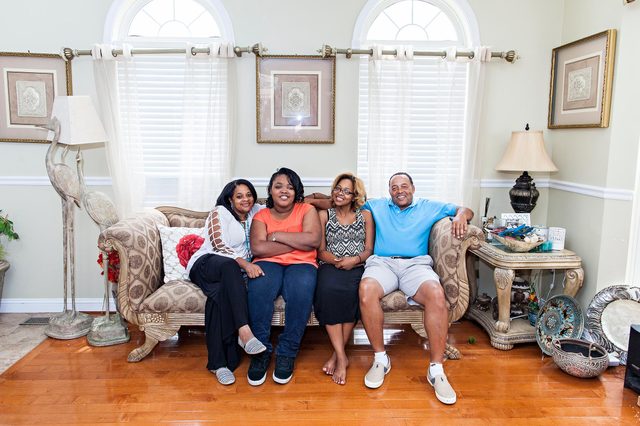
“Raychelle would put her hands up—she was afraid of being hit”
Terry and Laverne Jenkins met in the armed forces and knew they were meant to be together and join their families. At the time, Terry had two sons, and Laverne had one. Over the years they adopted two nieces due to a family tragedy, and went on to have a biological son and daughter together. They decided to become foster parents out of a desire to help other families succeed, and for the last 30 years they have done just that.
Raychelle was 15 when she first met the Jenkins. Scheduled to stay with the Jenkins for a short 72 hours, Laverne says Raychelle was placed in her home with only a black trash bag containing her belongings—which were severely lacking. “She came with clothing appropriate for an older man—not for a teenage girl. It looked as though someone’s grandfather had passed, and she was given his clothing. She had no toothbrush or pajamas—none of those things,” Laverne recalls.
It was apparent that Raychelle, born deaf, had been extremely neglected in her previous foster environments. “She hadn’t bathed in weeks, and the stench was awful. Her hair hadn’t been washed or braided, and she had bald spots from the lack of grooming. I couldn’t believe it,” Laverne told Reader’s Digest. Raychelle entered the foster care system due to neglect from her biological mother right before her sixth birthday, and had bounced from home to home throughout the years—some of which were abusive. “When Raychelle came to us she was extremely withdrawn and afraid of people. She would put her hands up because she was afraid of being hit, and her ability to communicate with others was almost nonexistent,” Laverne explains.
When a social worker told Laverne and Terry that after her weekend stay with them Raychelle would be placed in a group home, Laverne knew she had to take action. “I called the social worker I knew with Wendy’s Wonderful Kids and told her I wanted to petition for adoption immediately—there was no way a group home would be prepared to take care of Raychelle in the way she needed.” Once Raychelle was placed with the Jenkins, others began noticing changes in the teen as well. “The school social worker told me, ‘We knew she had to be in a new home, because she came to school clean,” Laverne recalls. “I told her, ‘You don’t have to worry about her anymore, she’s in the right home now,” she adds.
Laverne says that adopting Raychelle, who functions at a first grade level due to brain trauma she sustained during abuse, has been a motivation for growth in her own life. She says, “Adopting her was something that God put on my heart, and looking in her eyes I knew I was meant to be her forever mom. She’s made me a better person. I’m more empathetic and sympathetic to others. People think I’ve done great things for her, but she’s done them for me, too.”
Today, Raychelle is 20, and about to graduate high school. She only knew five American Sign Language words when arriving at the Jenkins home, and she now communicates well with over 400. Learn some fascinating facts about American Sign Language. Laverne says her daughter amazes her, and she’s learning sign language to communicate even better with Raychelle. “She’s learning to read and write, and she could barely write her name when we met. I believe she can go so much further,” she explains. Previously withdrawn and fearful, Laverne says Raychelle has grown to love others. She says, “Raychelle has more of a social life than I do, she goes to dances and recreation programs. I want her to be comfortable wherever she is, whether that’s with hearing people or non-hearing people. I want her to know her world is broad.”
Laverne wants others considering adoption of older children or those with special needs to know that any child in foster care has special needs. She explains,”Foster care children all have a special need for something. If you’re considering adoption or foster care, you should pray about it—we all have a mission in life, and if this is yours, then a higher power will provide for you.” She also encourages other adoptive parents to educate themselves about advocating for their child. “Go to the doctor and tell them what you think your child needs, get familiar with the IEP (individual education program) process, and advocate for them. If you don’t, no one else will. They can’t advocate for themselves,” she says.
